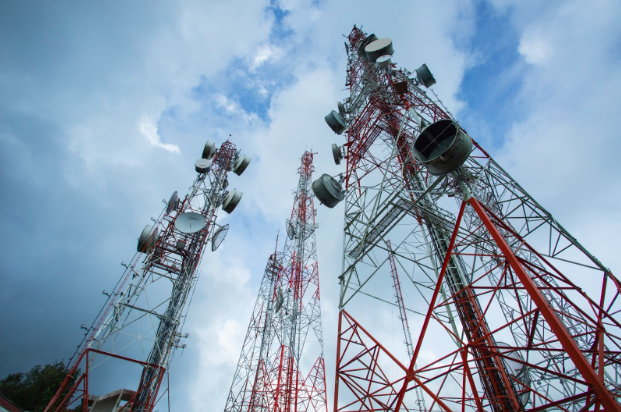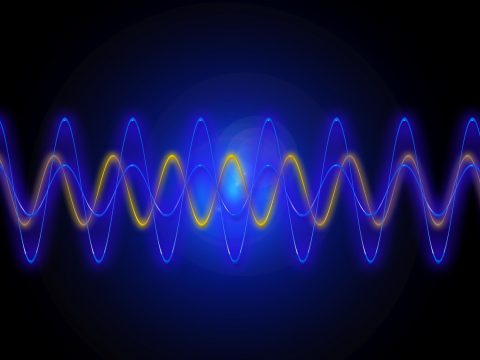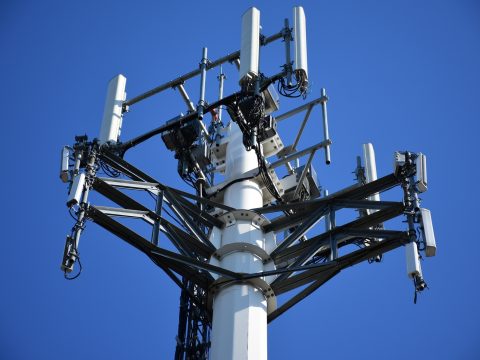What are Key Types of Microwave Antennas and What are They Used For?

Antenna Design for Space
July 11, 2019
A Brief Guide to Slotted Array Antennas
August 22, 2019A communication system is a system that transfers data between equipment and persons. A microwave antenna is defined as a device for physical transmission and is used for broadcasting microwave transmissions between two or more places.
Microwave antennas are important elements for any microwave network. Most types of microwave antennas are designed specifically to meet various mechanical and electrical requirements.
Every type of microwave antenna has features that enable it to function in specific situations and systems.
Below are the key types of microwave antennas and their uses.
1. Micro Strip Patch Antenna
The microstrip patch antenna has a patch used for radiating and that connects to a ground plane on one of its parts and a dielectric substrate on the opposite side.
Generally, the patch antenna contains conducting metals such as gold and copper. Patch antenna types have an operational frequency ranging between 100MHz and 100GHz. These antennas can be produced in huge amounts due to some benefits such as low fabrication cost, low volume, and less weight.
The antennas are popular for their extent of usage and good performance. It’s possible that microstrip antennas may replace conventional antennas.
Some of the areas where patch antennas are applied include paging devices, personal communication systems, cellular phones, and global positing satellites.
2. Horn Antenna
It’s also referred to as a microwave horn. A horn antenna is comprised of a waveguide, which has flared end walls on the outside forming a structure that looks like a megaphone. The horns are used widely as antennas microwave frequencies above 300 MHz and ultra-high frequencies.
Horn antennas are used to approximate how much gain the other antennas have. They are used as directive and calibrating antennas for equipment such as microwave-radio meters, and automatic door openers.
Some of the benefits of horn antennas are broad bandwidth, low-standing wave ratio, and moderate directivity. Horn antennas have a gain ranging up to 25db. They are used extensively at microwave frequency when you require moderate power gain.
3. Parabolic Antenna
This antenna uses a parabolic reflector. This is a parabolic-shaped and curved area that is used to direct the radio waves. The antenna is shaped like a dish thus it is referred to as a parabolic dish or dish antenna. One of the benefits of a parabolic antenna is that it has high directivity.
Parabolic antennas are applied as radio telescopes and for point-to-point communication since they have high-end gain. Also, these antennas are used as radars. They require the transmission of a narrow beam wave of radio to some equipment such as airplanes and ships.
4. Plasma Antenna
This is a kind of radio antenna that uses plasma rather than metal elements as a development device. Metal elements were used in antennas in the past years. Plasma antenna uses ionized gas for conduction.
The gas is ionized when reception or transmission occurs. The plasma antenna can operate up to 90GHz frequency range. Thus, they can be applied in reception and transmission of signals from radios.
Besides, the antenna has a cutoff of high frequency. It’s able to receive and transmit signals of low and high-frequency and it does not interact with the signals with high frequency. Some of the areas where plasma antennas are applied include 4G and radar systems, RFID, electronic intelligence, and high-speed digital communications.
5. MIMO Antenna
MIMO is an abbreviation for multiple inputs and multiple outputs. MIMO antennas are applied in radio. They are used at the receiving and transmitting points to enhance the process of communication.
MIMO antenna is among the best technologies in smart antenna. There are two ways of exploiting multiple antennas in MIMO. One, they are used in creating highly effective antenna directivity.
They are also used in the transmission of parallel data streams. This is to add to the system’s capacity.
Applications of MIMO antenna include RFID systems and mesh networks.
6. Omni Directional Antenna
These antennas receive and radiate energy in all horizontal directions equally. Omnidirectional antennas offer a perfect solution for applications that need good all-around coverage. In special applications, the antennas can be used to accommodate a specific down tilt to achieve a near field coverage.
Some microwave antenna designs are available in a wide range of frequency gains and bands.
7. Tracking Antenna
These designs are made specifically to stabilize and align the antenna automatically. At the same time, they maintain the point to point path in the movement of a platform in unstable surroundings.
Tracking antenna is routinely used in aviation, offshore drilling, marine, and mobile platforms. Here, the operators depend on Line-of-Sight (LoS) communications.
8. Yagi
This is a versatile antenna that utilizes a driven element. Behind the driven element is a reflector while in front of it is a director or several directors.
The design of the yagi antenna is significant as it is easy to optimize for features such as bandwidth, front-to-back ratio, and gain using the available modern antenna design software. Some of the antenna designs use a corner reflector at the back of the driven element to enhance performance.
Yagi antennas are easy to construct. Thus, they make an excellent choice when needed urgently for a directional application in UHF, VHF, and HF brands. This is only when there is available material.
9. Airborne Antenna
These antennas are used in various airborne platforms as radio navigation and communication systems. Airborne antennas are designed for use in difficult surroundings for years of optimum efficiency and trouble-free operation.
The systems are used in an array of custom frequency bands, military, scientific, and standard commercial bands. These antennas are used as part of the data link system for communications on aircraft.
Get Familiar with Microwave Antenna and Their Uses
The microwave antennas described above are useful devices in radar, radio, and satellite communications and also in wireless communication systems. Different microwave antennas have different uses.
Each characteristic of the microwave antennas makes them suitable for specific situations and systems. It is important to familiarize yourself with this knowledge so as understand the communication system.
Visit our blog for more information about microwave antennas and their uses.




